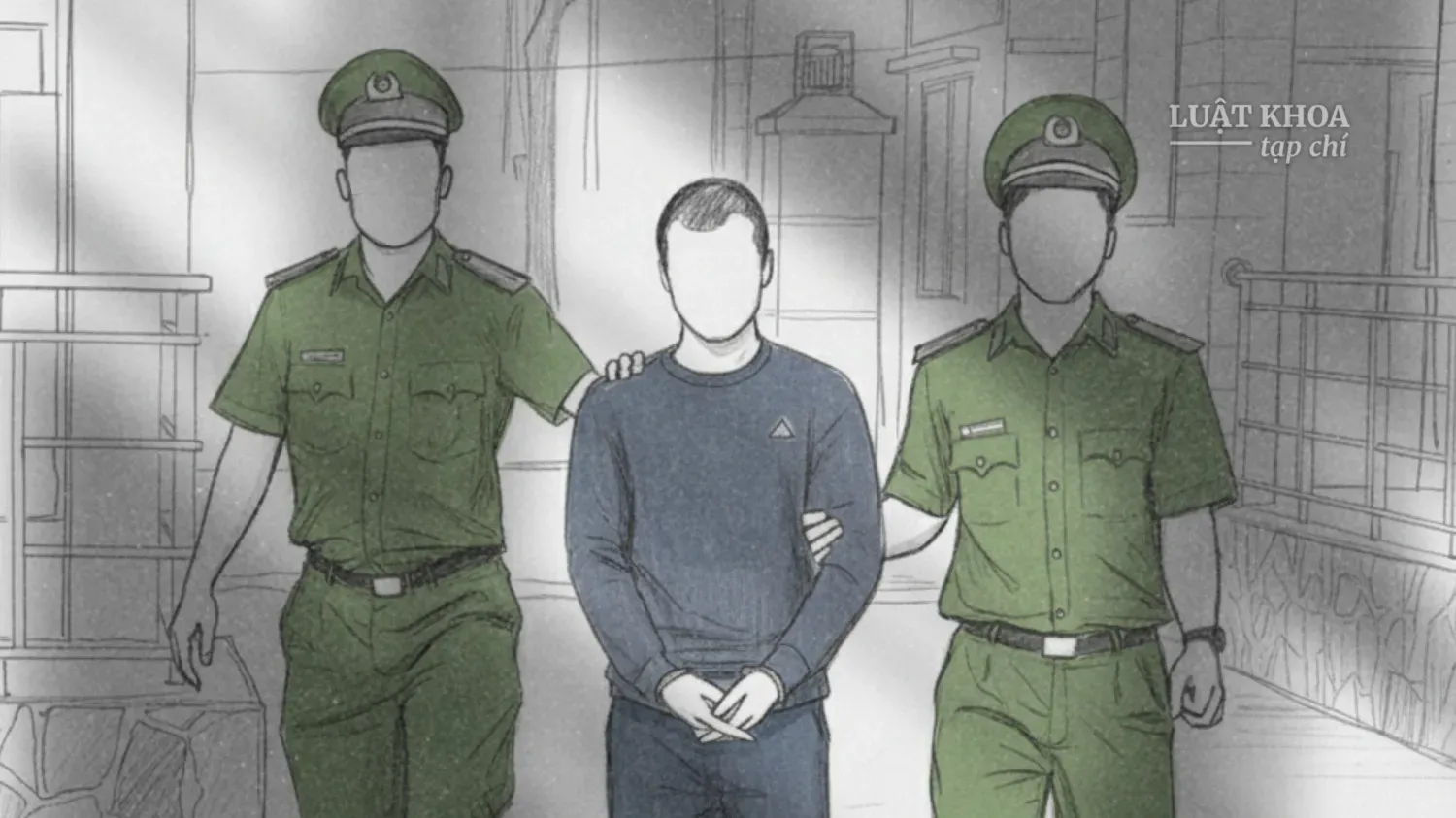The public consumption of the “mug shot”—the official photo taken by police after an arrest—has spurred both global trends and local controversy. In 2020, the “mug shot challenge” went viral on TikTok, with users recreating the grim expressions and horizontal backdrops of arrest photos. [1] The trend became so widespread that Capcut even launched an AI tool for users to generate their own.
In Việt Nam, this phenomenon has manifested differently. Following the recent arrests of many high-profile celebrities, businesspeople, and beauty queens, official police photos were published in newspapers and circulated widely online.
These images, showing the “unfiltered”—pale, tired, and disheveled—faces of the accused, triggered a wave of public fascination and judgment. Social media comment sections filled with mockery, as some users joked the police’s photography skills were “magic mirrors revealing evil.” [2]
The Origins of the Mug Shot
Mug shots have been a staple in Police photography since shortly after the camera’s invention. The earliest known photos date to 1843 in Brussels, and British police soon hired professional photographers for the same purpose: to help officers recognize known criminals. [3] Prisons also began systematically photographing inmates to prevent identity fraud.
However, this internal use quickly evolved into a public spectacle. In 1854, Swiss authorities were the first to publicly distribute criminal photos, creating the “Wanted” posters that would become famous in the American West. [4] This trend was cemented in 1858 by the New York Police Department’s “Rogues Gallery,” a public exhibition of criminal photos. [5] What started as a crime-prevention tool became a public spectacle, shaming offenders for entertainment. The concept soon spread to Germany (1864), Russia (1867), and England (1860).
The methodology was standardized in the late 1880s by Alphonse Bertillon, who created the dual-profile (front and side) format. [6] The Metropolitan Museum of Art still preserves Bertillon’s work from this era. Over time, the mug shot became a standard component of the police and the criminal justice system.
The issue is not their existence; few would object if the images remained within the justice system for investigation. The controversy lies in their publication, which has become so common that the public now feels “incomplete” reading crime news without a suspect’s photo. Yet, from the perspective of the accused—who has not yet been convicted—the practice is deeply problematic.
Three Core Issues with Public Mug Shots
1. Arrest Does Not Equal Guilt
The primary issue with publicizing mug shots is that they are taken immediately after an arrest, well before any trial has concluded or an official investigation is complete.
An arrest is not a conviction. While investigators typically have some evidence—an arrest requires a warrant from or approved by the prosecutor’s office (except in emergency cases)—this standard is not proof of guilt.
Under Article 119 of Việt Nam’s 2015 Criminal Procedure Code, temporary detention is legally defined as a preventive measure for individuals suspected of a crime. Crucially, a suspect, defendant, or accused is presumed innocent until a court issues a final judgment. Detention merely restricts an individual’s liberty to aid the investigation or prevent further offenses; the accused retains all other civil rights.
2. When the Presumption of Innocence Fails
The impact of a published mug shot differs drastically based on guilt. While it is an inconvenience for the guilty, it is devastating for the wrongfully accused.
Such miscarriages of justice are not as rare as official figures might suggest. Although Việt Nam’s Chief Justice recently claimed no wrongful convictions were found in the latest judicial term [7], the country has seen infamous cases like those of Huỳnh Văn Nén and Hàn Đức Long. These incidents demonstrate that under pressure to “solve” cases, police can make mistakes or even coerce confessions from the wrong suspects.
A 2013 case in Sóc Trăng province provides a stark example. Six young men were jailed for allegedly killing a motorbike driver named D. [8] The men confessed, and the case was nearly closed until two young women came forward and admitted to the murder. An investigation subsequently revealed that the six men had been brutally beaten to extract the false confessions. [9]
Had their mug shots been published, the public—acting as “online judges”—would have likely condemned them based on defiant or disheveled appearances, solidifying a false narrative of guilt long before their innocence was proven.
3. The ‘Shame-for-Profit’ Business Model
A mug shot captures a person at a moment of profound humiliation, yet in many places, this vulnerability has been monetized. In the U.S., a “shame-for-profit” industry has emerged, led by websites like mugshots.com.
These sites publish arrest photos and then charge the individuals to remove them, with fees reportedly ranging from $178 to $399. [11] Even then, there is no guarantee the images will not reappear elsewhere. This practice is widely condemned, but it highlights the unresolved conflict between the public’s right to know and an individual’s right to privacy.
This exploitation works because a mug shot reduces a person to a single frame of guilt. When the image of assistant “CEO” Nguyễn Long Vũ arrested for assault was published, the public largely bypassed any nuance or circumstance. [10] The reaction was immediate satisfaction that “justice was served.”
While Việt Nam does not yet have this specific exploitative industry, the public’s eager mockery in the “CEO” case—from posing in his chair to comparing his status with the victim’s—demonstrates that a market for such public shaming could easily develop.
Sa Huỳnh wrote this article in Vietnamese and published it in Luật Khoa Magazine on Nov. 5, 2025. J. Miu translated it into English for The Vietnamese Magazine.

